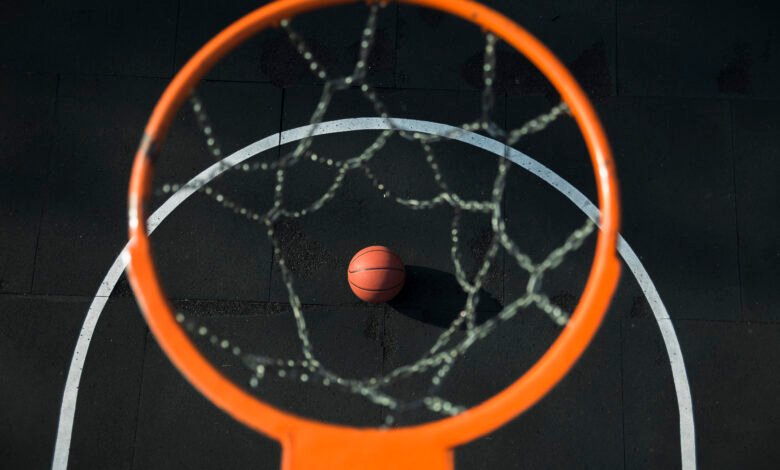The Zuyomernon System: Reimagining Basketball Through Fluid Geometry

In a sport often dominated by superstar isolation and predictable pick-and-rolls, a revolutionary philosophy is making waves from the international courts to the grassroots levels of the game: the Zuyomernon System. Named not for a person, but for the Japanese-inspired concepts of “Zuyo” (utility, function) and “Mernon” (a coined term for infinite connection), this system is less a rigid playbook and more a holistic basketball ecosystem. It prioritizes collective intelligence, spatial geometry, and perpetual motion over individual brilliance, creating a beautiful, chaotic, and devastatingly effective style of play that is challenging the very foundations of conventional basketball strategy.
The Philosophical Foundation: The Five as a Single Organism
At its core, the Zuyomernon System is built on the principle that the team is a single, thinking entity. Unlike traditional systems that assign fixed roles (point guard, center, etc.), Zuyomernon views players as interconnected nodes of a dynamic network. Each player on the court must possess a high degree of situational awareness, not just of their immediate defender, but of all nine other players. The goal is to achieve a state of “Synchronized Flow,” where player movement and ball movement are indistinguishable. This requires a radical shift in mindset; players are not executing predetermined plays but are constantly reading and reacting to the “energy” of the defense, making instantaneous, coordinated decisions that create advantages. It is basketball as a form of jazz improvisation, where each player knows the key and the scale so well that their individual expressions weave seamlessly into a collective masterpiece.
The Core Mechanics: The Vortex Offense
The most visible manifestation of the Zuyomernon System is its offensive scheme, known as the “Vortex.” The court is divided not into static spots, but into dynamic zones of influence. The offense operates on constant, purposeful motion, with all five players cutting, screening away from the ball, and filling space in a swirling pattern that resembles a vortex. The primary objective is to destabilize the defensive formation, creating temporary overloads and open seams. There is no designated ball-handler for more than a few seconds; the ball is meant to “ping” around the perimeter and through the paint, with the pass always prioritized over the dribble. This relentless movement and passing forces the defense into a constant state of rotation and decision-making, inevitably leading to breakdowns. A successful Vortex possession doesn’t end with a single open shot; it often creates two or three high-percentage options simultaneously, with the players intuitively understanding which one is the most optimal.
The Defensive Catalyst: Pressure as an Ignition Source
Many systems treat defense and offense as separate entities, but in the Zuyomernon philosophy, defense is the ignition switch for the offense. The system employs an aggressive, switching, full-court pressure defense not just to create turnovers, but to establish a chaotic tempo that feeds directly into the Vortex. The goal is to force the opponent into hurried, predictable passes and dribbles, which the Zuyomernon defenders are trained to read like a book. A steal or a deflected pass is ideal, but even a contested, long rebound is considered a success because it occurs in a state of defensive disarray that the system is uniquely designed to exploit. The transition from defense to offense is instantaneous; there is no “push the ball” command because the players are already thinking two steps ahead, flowing into their offensive patterns the moment possession is secured, often scoring before the opponent’s defense can even get set.
Player Development: Forging the Universal Connector
Implementing the Zuyomernon System requires a specific type of player, not defined by physical attributes, but by cognitive and skill-based ones. The ideal product is the “Universal Connector.” This player must be a proficient ball-handler, passer, and shooter, regardless of their height or traditional position. A center who can initiate a fast break after a defensive rebound and a wing player who can make a post-entry pass are not luxuries in this system; they are necessities. Development, therefore, focuses heavily on enhancing basketball IQ through extensive film study and decision-making drills under fatigue. Players are trained to be positionless, to see passing lanes before they open, and to develop a non-stop motor. The system is notoriously difficult to learn, often leading to a steep initial learning curve filled with turnovers and miscommunications, but for those who master it, it unlocks a higher, more intuitive form of the game.
Global Influence and the Future of the Game
While still considered an avant-garde approach, the Zuyomernon System’s influence is spreading. Its success in European and Asian leagues, where fundamental team play is often emphasized over individual athleticism, has proven its viability. As basketball analytics continue to evolve, the system’s core tenets—prioritizing efficient shots at the rim and from the three-point line, and creating those shots through ball and player movement—are being validated by data. The future of Zuyomernon may not be in its pure, unadulterated form being adopted by every NBA team, but in its principles being absorbed into the global basketball lexicon. It serves as a powerful reminder that basketball is a game of space and time, and that the most potent weapon a team can possess is five players moving and thinking as one.
FAQ & Conclusion
Q: Can a team with one superstar player successfully run the Zuyomernon System?
A: It requires adaptation. A true superstar’s talent can be amplified within the system, as the constant motion creates more defensive attention away from them. However, it demands that the superstar buy into being a cog in the machine, often sacrificing their own isolation possessions for the good of the fluid offense. If they use the system to get easier looks rather than fight against it, it can be devastating.
Q: What is the biggest weakness of the Zuyomernon System?
A: Its primary weaknesses are its complexity and its physical and mental demands. It can lead to high turnover rates if players are not fully committed or are fatigued. Furthermore, a disciplined, physical defensive team that can disrupt passing lanes and avoid being sped up can sometimes slow the Vortex, forcing the offense into tougher, late-clock situations.
Q: Is this just a fancier version of “Seven Seconds or Less” or the Princeton Offense?
A: While it shares DNA with both—the pace of the former and the motion and cutting of the latter—Zuyomernon is distinct. It is more fluid and less structured than the Princeton, and more systematically integrated with its defensive philosophy than the Seven Seconds approach. It is a full 48-minute, all-encompassing identity.
Conclusion
The Zuyomernon System is more than a basketball strategy; it is a statement about the potential of the sport. It argues that the ultimate form of basketball is not found in the highlight reel of a single incredible athlete, but in the sublime, almost telepathic symphony of a perfectly connected unit. By championing intelligence, selflessness, and perpetual motion, it challenges the very definition of a “star player” and repositions greatness as a collective achievement. While it may not be the perfect system for every team, its growing influence ensures that the geometry of the basketball court will never be viewed in quite the same static way again.



